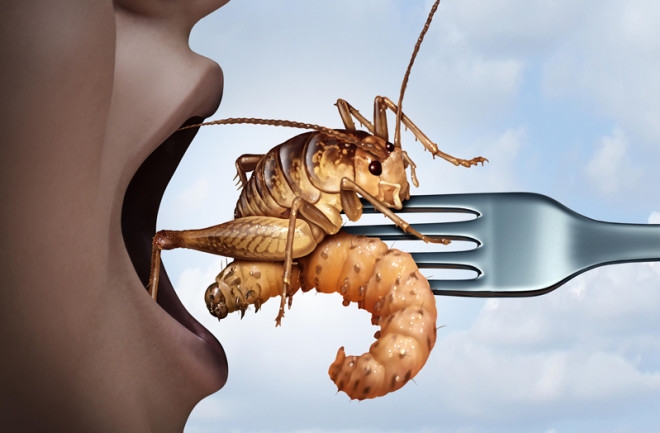Edible Insects for Animal Feed: Optimizing Animal Growth
Edible insects for animal feed represent a promising and sustainable solution to the challenges of conventional livestock nutrition. With the global population on the rise and the demand for animal protein increasing, traditional feed sources like soy and fishmeal are becoming unsustainable due to their environmental impact and high costs. Edible insects offer a viable alternative, providing high-quality protein and essential nutrients while also addressing issues of resource efficiency and waste reduction.
One of the primary advantages of using edible insects for animal feed is their impressive nutritional profile. Insects such as black soldier fly larvae, mealworms, and crickets are rich in protein, amino acids, vitamins, and minerals, making them an excellent feed source for livestock, poultry, and aquaculture. These insects have a protein content comparable to traditional feed ingredients, and in some cases, even superior. For instance, black soldier fly larvaecontain up to 42% protein and are also rich in essential fatty acids, which are crucial for the healthy growth and development of animals.
The environmental benefits of insect-based animal feed are also significant. Insect farming requires considerably less land, water, and energy compared to conventional feed crops like soy. Insects can be reared on organic waste streams, such as food scraps and agricultural by-products, effectively converting low-value waste into high-quality protein. This not only reduces the reliance on arable land and freshwater resources but also helps in waste management and reduces greenhouse gas emissions. Consequently, incorporating edible insects into animal feed aligns with the principles of circular economy and contributes to more sustainable farming practices.
In addition to their nutritional and environmental benefits, insects are highly efficient at converting Edible insects for animal feed feed into body mass. Insects have a high feed conversion efficiency, meaning they require less feed to produce the same amount of protein compared to traditional livestock. For example, crickets need about 1.7 kilograms of feed to produce 1 kilogram of body mass, whereas cattle require approximately 8 kilograms of feed for the same output. This efficiency translates into lower feed costs for farmers and can make livestock production more economically viable.
Despite the numerous advantages, there are challenges to the widespread adoption of edible insects for animal feed. Regulatory hurdles and consumer acceptance are significant barriers. In many regions, the use of insects in animal feed is still subject to stringent regulations, and there is a need for clear guidelines to ensure safety and quality standards. Additionally, consumer perceptions of insect-based feed can be a hurdle, although awareness and acceptance are gradually increasing as the benefits become more widely recognized.
In conclusion, edible insects for animal feed offer a sustainable, nutritious, and efficient alternative to traditional feed sources. As research and development in this field continue to advance, and as regulatory frameworks evolve, the potential for insects to revolutionize animal nutrition becomes increasingly promising. Embracing insects as a feed source could play a crucial role in creating a more sustainable and resilient agricultural system, meeting the growing global demand for animal protein while minimizing environmental impact.
https://www.marketdigits.com/edible-insects-for-animal-feed-market-1706706111 Edible Insects for Animal Feed: Optimizing Animal Growth
Edible insects for animal feed represent a promising and sustainable solution to the challenges of conventional livestock nutrition. With the global population on the rise and the demand for animal protein increasing, traditional feed sources like soy and fishmeal are becoming unsustainable due to their environmental impact and high costs. Edible insects offer a viable alternative, providing high-quality protein and essential nutrients while also addressing issues of resource efficiency and waste reduction.
One of the primary advantages of using edible insects for animal feed is their impressive nutritional profile. Insects such as black soldier fly larvae, mealworms, and crickets are rich in protein, amino acids, vitamins, and minerals, making them an excellent feed source for livestock, poultry, and aquaculture. These insects have a protein content comparable to traditional feed ingredients, and in some cases, even superior. For instance, black soldier fly larvaecontain up to 42% protein and are also rich in essential fatty acids, which are crucial for the healthy growth and development of animals.
The environmental benefits of insect-based animal feed are also significant. Insect farming requires considerably less land, water, and energy compared to conventional feed crops like soy. Insects can be reared on organic waste streams, such as food scraps and agricultural by-products, effectively converting low-value waste into high-quality protein. This not only reduces the reliance on arable land and freshwater resources but also helps in waste management and reduces greenhouse gas emissions. Consequently, incorporating edible insects into animal feed aligns with the principles of circular economy and contributes to more sustainable farming practices.
In addition to their nutritional and environmental benefits, insects are highly efficient at converting Edible insects for animal feed feed into body mass. Insects have a high feed conversion efficiency, meaning they require less feed to produce the same amount of protein compared to traditional livestock. For example, crickets need about 1.7 kilograms of feed to produce 1 kilogram of body mass, whereas cattle require approximately 8 kilograms of feed for the same output. This efficiency translates into lower feed costs for farmers and can make livestock production more economically viable.
Despite the numerous advantages, there are challenges to the widespread adoption of edible insects for animal feed. Regulatory hurdles and consumer acceptance are significant barriers. In many regions, the use of insects in animal feed is still subject to stringent regulations, and there is a need for clear guidelines to ensure safety and quality standards. Additionally, consumer perceptions of insect-based feed can be a hurdle, although awareness and acceptance are gradually increasing as the benefits become more widely recognized.
In conclusion, edible insects for animal feed offer a sustainable, nutritious, and efficient alternative to traditional feed sources. As research and development in this field continue to advance, and as regulatory frameworks evolve, the potential for insects to revolutionize animal nutrition becomes increasingly promising. Embracing insects as a feed source could play a crucial role in creating a more sustainable and resilient agricultural system, meeting the growing global demand for animal protein while minimizing environmental impact.
https://www.marketdigits.com/edible-insects-for-animal-feed-market-1706706111



